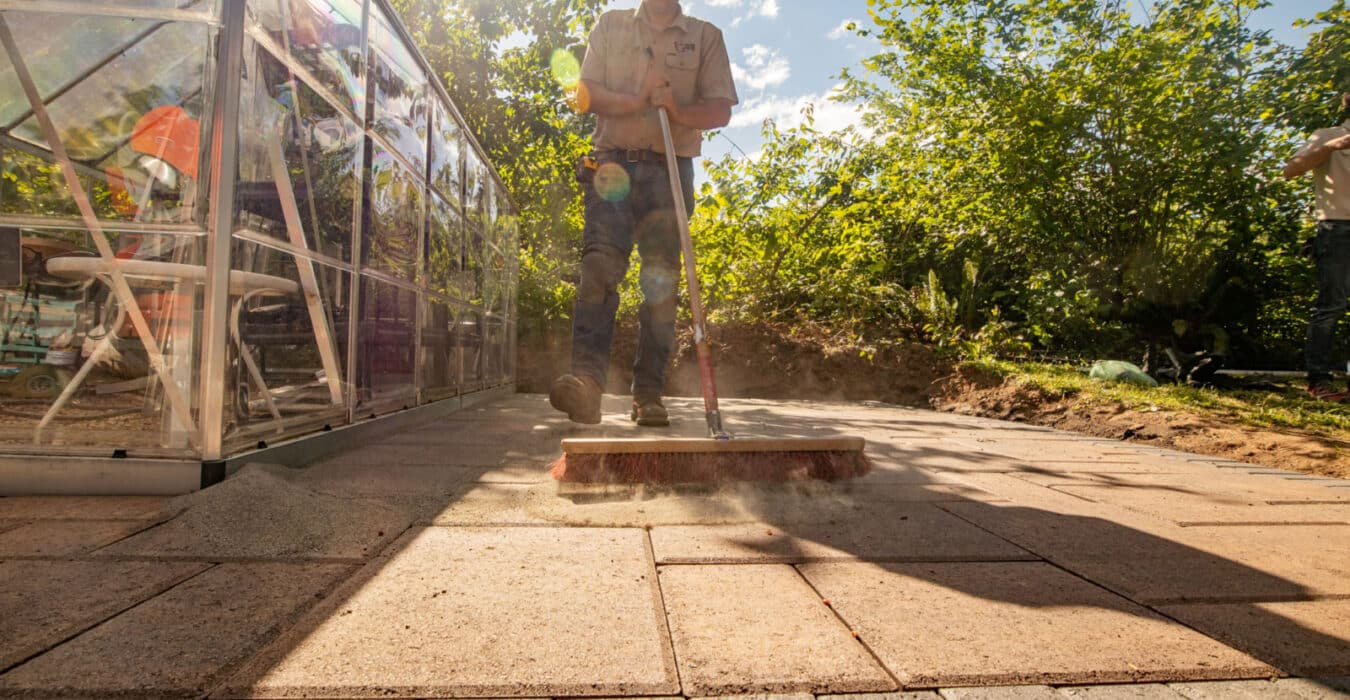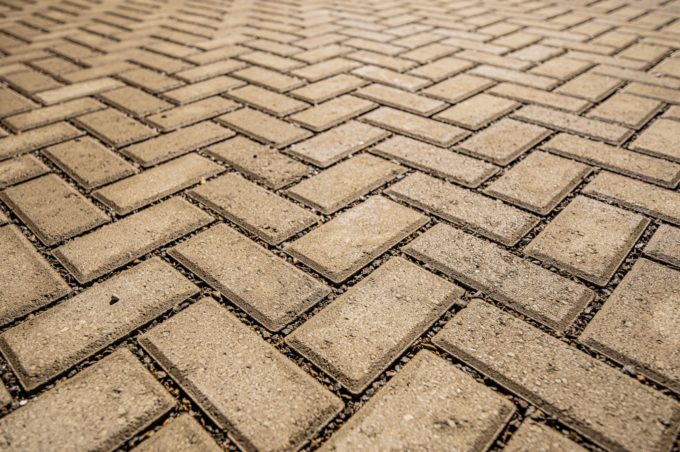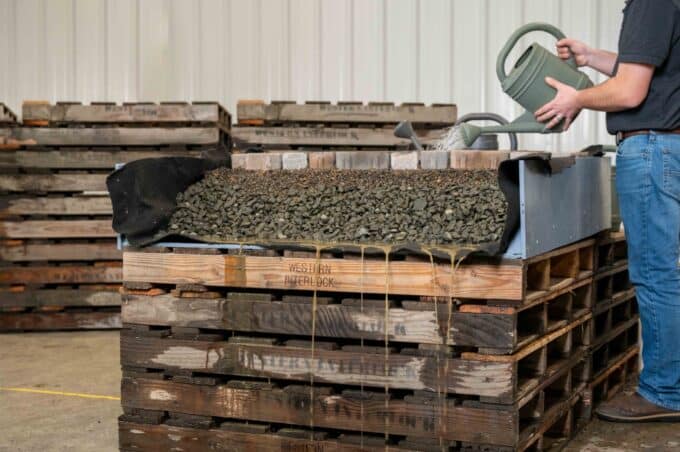Get our FREE Project Planning Guide
"*" indicates required fields
Is it possible for pavers to be flexible and strong at the same time?
It may not surprise you that the most significant benefit of pavers is their ability to flex with significant topographical changes over time.
One of the things impacting the strength and flexibility of your pavers is the material you choose to fill your paver joints with. It matters to varying degrees, depending on your goals for your pavers. It is possible to lock your pavers when using the right joint products.
What to consider when choosing between joint options
The first thing to consider when choosing the correct product for your paver joints is your selection for the design and color of your pavers. You should consider what color will look best with your aesthetic. Also, dry sand and polymeric sand are for standard paver joints, not for permeable joints or stepping stones (anything more than 1” joints).
The setting is the second thing you should look at when deciding what material to use for your paver joints. What kind of foliage will grow between your joints? Will there be weeds, grass, or moss? Does it freeze very often in your location? Do you have ants or gophers? How much flexibility do you need?
Finally, look at the process of laying your pavers. Do you have water easily accessible? Can you allow drying time?
Paver Joint Option #1: Dry Sand
For our first product option, let’s look at dry sand.
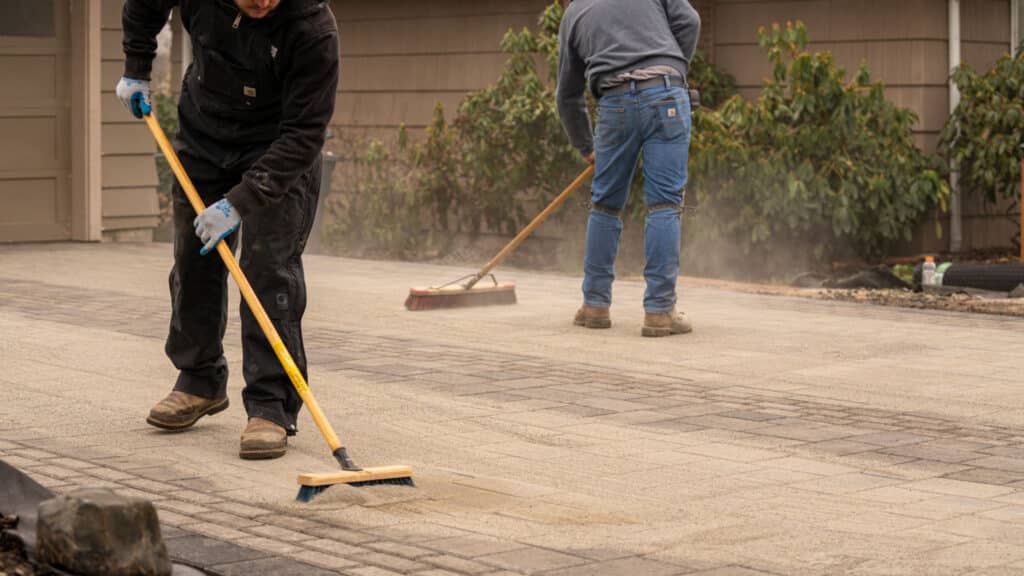
What is dry sand?
Dry sand is the best choice for natural joints. It does not contain any moisture inside the sand.
Benefits of dry sand
Dry sand is easy to install, does not require any drying time, and works regardless of your location and paver design.
Drawbacks of dry sand
You should know that dry sand can wash away over time and doesn’t necessarily prevent weeds, moss, or insects. Also, you cannot install dry sand in the rain.
Dry sand products
If dry sand sounds like the product you need for your paver joints, check out our Basalite #1 Fine Sand.
Paver Joint Option #2: Polymeric Sand
Now, let’s look at polymeric sand.
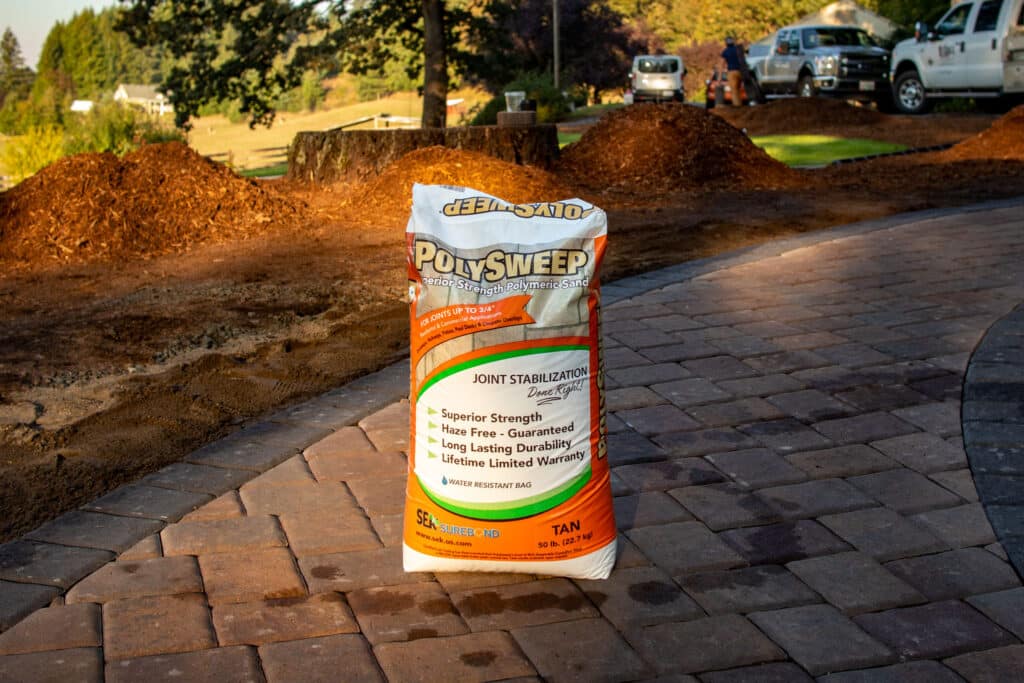
What is polymeric sand?
Polymeric sand is a semi-synthetic joint option that dries hard, allowing the joints to expand and contract.
Benefits of polymeric sand
Polymeric sand is excellent for use in areas that need to sustain heavy vehicular traffic. It is also an excellent weed and insect deterrent in various colors.
Drawbacks of polymeric sand
If you are looking for permeable joint sand, polymeric sand is not your option. Before investing, consider that it hardens quickly and cannot be installed in the rain.
Polymeric sand products
There are Western Interlock product options if you choose this option.
Paver Joint Option #3: Joint Compound
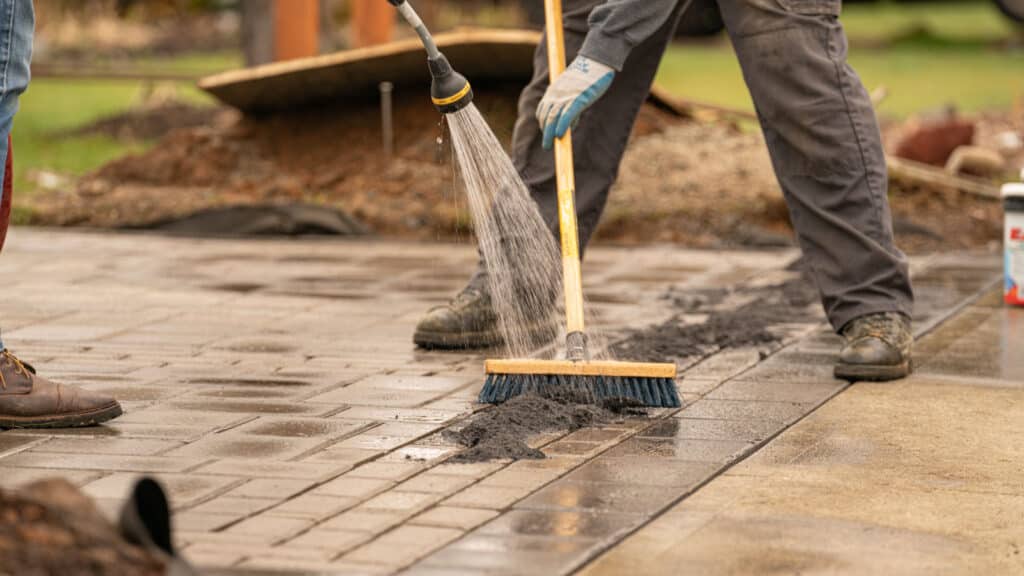
Joint compound is the final option you can use for paver joints.
What is Joint Compound?
Joint compound is a synthetic joint product that dries hard and is applied when wet.
Benefits of joint compound
The benefits of joint compound include its permeability and the way it can be used even in large paver joints. It also can be installed in any weather condition.
Drawbacks of joint compound
Joint compound should not be used for joints that measure any less than 3/16”. It also cannot be used anywhere you expect heavy vehicular traffic and must be installed while wet.
Joint compound products
If joint compound seems like the product for your project, you can purchase our Easy Joint Compound.
Download our Paver Project Planning Guide
If you’re ready to start your project, download our free Project Planning Guide so you can get your questions answered and start off right.
Get our FREE Project Planning Guide
Tell us where to send it and we’ll email the backyard planning guide to you right away!
"*" indicates required fields


